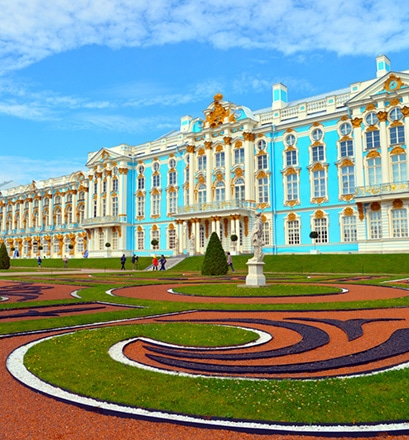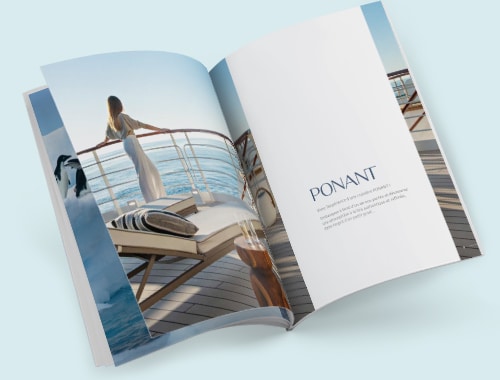raisons de découvrir l'Europe du Nord
Pourquoi partir en Europe du Nord et en Scandinavie ? Entre culture, paysages extraordinaires et îles mythiques ou méconnues, il s’agit d’une destination de premier choix pour les voyageurs en quête d’aventures urbaines ou d’explorations naturelles.
En savoir plus
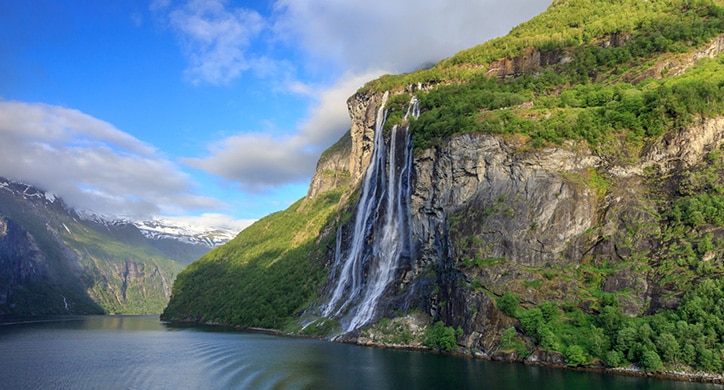
Les Incontournables de l'Europe du Nord et de la Scandinavie
Fjords norvégiens, capitales baltes, joyaux d’Irlande, d’Ecosse et d’Angleterre. Entre cultures singulières et nature saisissante, voici les expériences incontournables à s’offrir lors d’une croisière en Europe du Nord.
En savoir plus
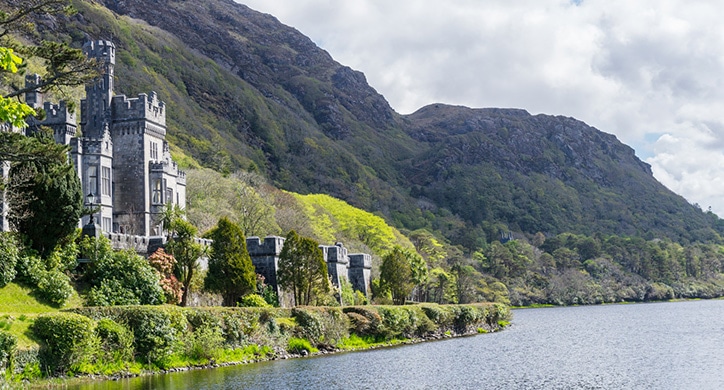
Explorez l'Europe du Nord et la Scandinavie
3 raisons de découvrir l'Europe du Nord
Pourquoi partir en Europe du Nord et en Scandinavie ? Entre culture, paysages extraordinaires et îles mythiques ou méconnues, il s’agit d’une destination de premier choix pour les voyageurs en quête d’aventures urbaines ou d’explorations naturelles.
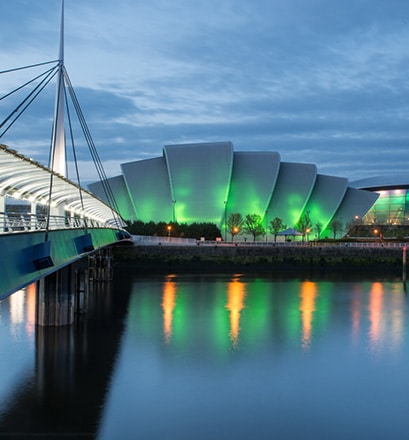
Des villes à la culture riche
De Bergen à Helsinki, de Londres à Belfast, de Glasgow à Copenhague en passant par Dublin, Liverpool ou Amsterdam, villes hanséatiques, capitales culturelles et centres historiques témoignent d’un passé dense et d’une vie quotidienne trépidante. Entre les musées de première importance, les galeries d’art, le contraste des bâtiments historiques et des architectures futuristes, les rues animées ou les canaux paisibles, les grandes villes emblématiques d’Europe du Nord et de Scandinavie ont bien des secrets à dévoiler.
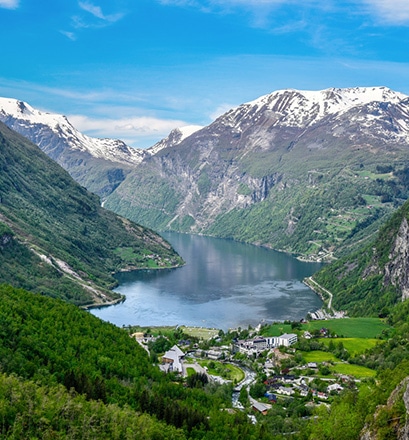
Des paysages à couper le souffle
Naviguer au coeur des fjords norvégiens, entourés de montagnes et de cascades tombant à pic dans une eau d’un bleu profond, à la découverte de glaciers spectaculaires. Longer des côtes verdoyantes, approcher les mystérieuses colonnes basaltiques de la Chaussée des Géants en Irlande du Nord, randonner dans des plaines et des landes balayées par les vents frais, observer une flore étonnante, admirer les lacs du Connemara, aborder des plages désertes… Chaque jour est l’occasion d’embrasser de nouveaux panoramas grandioses.
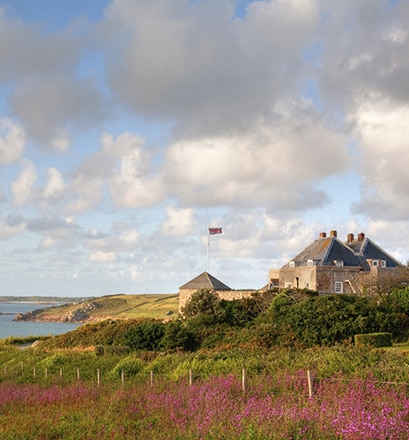
Des îles mythiques ou méconnues
Ruines d’anciens châteaux dans les îles Scilly, colonies de macareux sur l’île d’Heimaey, points de vue impressionnants sur l’île de Wight ou sur l’île de Skye, fascinantes découvertes sur l’île de Man, réputée pour ses courses de moto et rallyes automobiles… À chaque morceau de terre sa spécificité qui en fait une destination à part, un bout du monde où il fait bon se déconnecter.
Les Incontournables de l'Europe du Nord et de la Scandinavie
Fjords norvégiens, capitales baltes, joyaux d’Irlande, d’Ecosse et d’Angleterre. Entre cultures singulières et nature saisissante, voici les expériences incontournables à s’offrir lors d’une croisière en Europe du Nord.
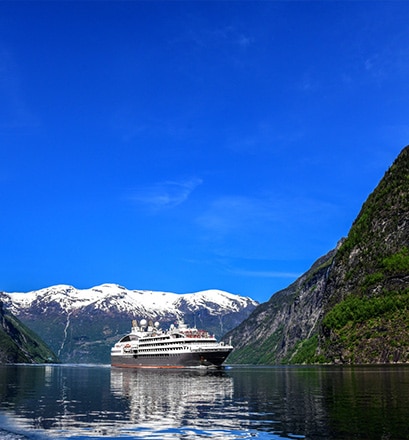
Faire un tour de kayak dans le Nordfjord - Norvège
L’eau d’un bleu profond reflète les paysages alentours tel un miroir paisible. Façonné par les glaciers, le Nordfjord est considéré comme l’un des plus beaux fjords de Norvège. Partir en kayak le long des rives du fjord, c’est se laisser porter face à la grandeur de la nature, ses montagnes aux falaises abruptes, ses cascades spectaculaires, ses glaciers gigantesques… Un pur moment d’harmonie avec les éléments.
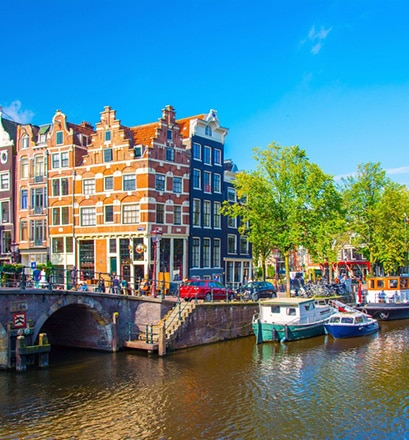
Découvrir la campagne hollandaise et les canaux d’Amsterdam - Pays-Bas
Rendez-vous dans les Pays-Bas authentiques avec une visite du village typique de Broek in Waterland, connu pour ses maisons en bois et ses fermes traditionnelles, puis du polder de Beemster, inscrit au patrimoine mondial de l’Unesco. La visite d’un moulin à vent du XVIIe siècle complètera ce tour panoramique. Il s’achèvera par une croisière sur les canaux d’Amsterdam, meilleure façon d’admirer la plupart des curiosités de la ville, comme les anciennes demeures de marchands, les églises et entrepôts des XVIe et XVIIe siècle.
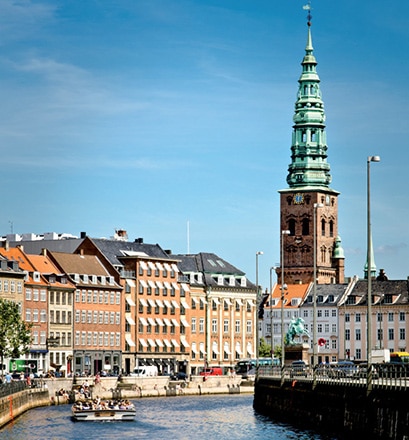
S’offrir une croisière dans Copenhague - Danemark
Comme Amsterdam, Copenhague s’apprécie depuis l’eau. Opter pour une croisière sur les canaux de la ville, c’est être garanti de voir les incontournables de la capitale danoise : le canal de Nyhavn avec ses maisons colorées, la légendaire Petite Sirène, l’opéra, le palais d’Amalienborg, la bibliothèque royale, la bourse ou encore l’église Notre-Sauveur.
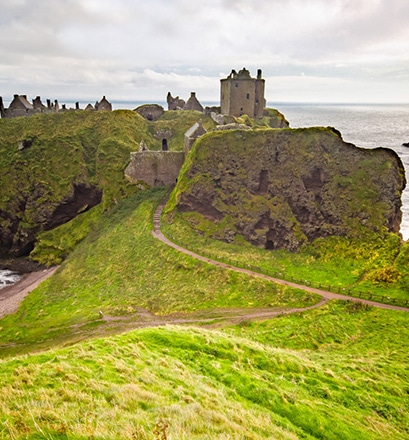
Accéder au château perché de Dunottar, en Écosse - Royaume-Uni
Il représente à lui seul l’idée que l’on peut se faire des paysages mythiques de l’Écosse et de ses châteaux en ruine qui ont gardé de leur superbe d’antan. Le château perché de Dunottar trône fièrement sur sa presqu’île, à 50 mètres au-dessus de la mer du Nord. Son emplacement stratégique lui a valu une place de choix dans l’Histoire de l’Écosse, mais c’est avant tout la beauté du site qui attire aujourd’hui les curieux du monde entier.
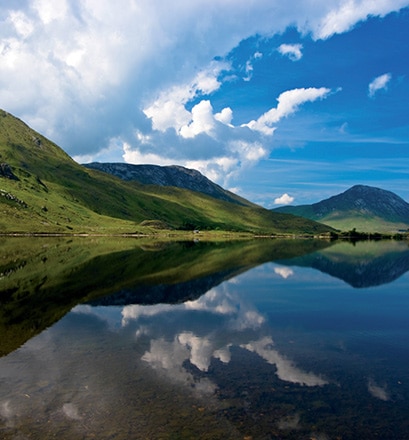
Voyager dans le temps au coeur de la région du Connemara - Irlande
Collines verdoyantes, lacs aux eaux sombres, landes aux mille couleurs de vert et de brun, châteaux impressionnants… La région du Connemara, en Irlande, conjugue la découverte de sites d’exception à la poésie d’une nature majestueuse. La traversée du comté de Galway, la visite de la sublime abbaye de Kylemore, la ville paisible de Clifden, le château d’Ashford ou les paysages spectaculaires sur le Lough Corrib laissent à coup sûr des souvenirs impérissables.

Se balader dans Riga - Lettonie
Riga se visite entre terre et eau. Une croisière sur son canal, à bord de petits bateaux à fière allure, permet d’apprécier sa douceur et la beauté de certains de ses monuments, comme le théâtre national de Lettonie. À pied, l’opéra national, l’académie de musique, la gare centrale ou la rue Brivibas, principale artère commerciale de la capitale lettone, valent le détour. Enfin, le centre historique, avec ses magnifiques demeures témoignant du passé faste de cette ville de la ligue hanséatique, ainsi que sa superbe cathédrale du Dôme, réputée pour son orgue monumental de 6 700 tuyaux, font partie des incontournables.
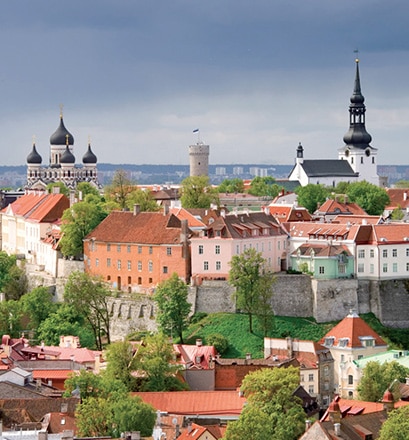
S’imprégner du folklore à Tallinn - Estonie
Malgré les bombardements intensifs de l’armée soviétique pour libérer Tallinn durant la Seconde Guerre mondiale, le centre-ville a été épargné à 90%. Aussi, a-t-il rejoint la liste du patrimoine mondial de l’Unesco, en 1997. Un tour de la vieille ville permet d’ailleurs de s’imprégner de l’ambiance de la partie médiévale du centre historique avec ses remparts et ses tours de guet. Cathédrale gothique, château qui abrite aujourd'hui le parlement d’Estonie, église russe orthodoxe et ruelles pavées donnent à la cité un charme indéniable. Complétée par un spectacle folklorique et une balade au marché d’artisanat local de Sainte-Catherine, cette visite dévoilera tous les secrets de Tallinn.
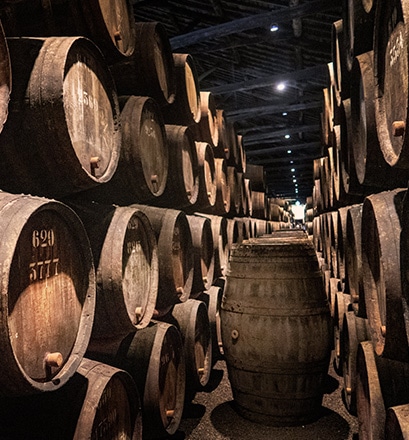
Visiter une distillerie - Irlande
Unique en Irlande et en Grande-Bretagne, l’ancienne distillerie Jameson, toujours en activité, produit un whisky de qualité près de Cork. Grâce à une visite guidée des lieux, on apprécie la superbe des bâtiments industriels du XVIIIe siècle parfaitement restaurés, la roue à aube opérationnelle et le plus grand alambic en cuivre du monde… d’une capacité de 145 500 litres ! Place ensuite à une dégustation dans l’atmosphère détendue d’un pub irlandais.
























